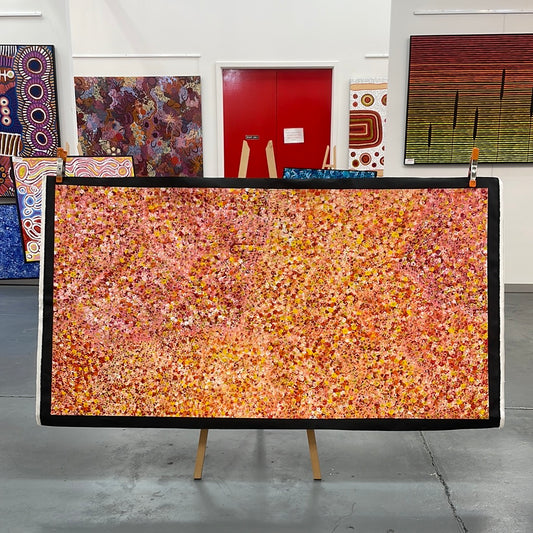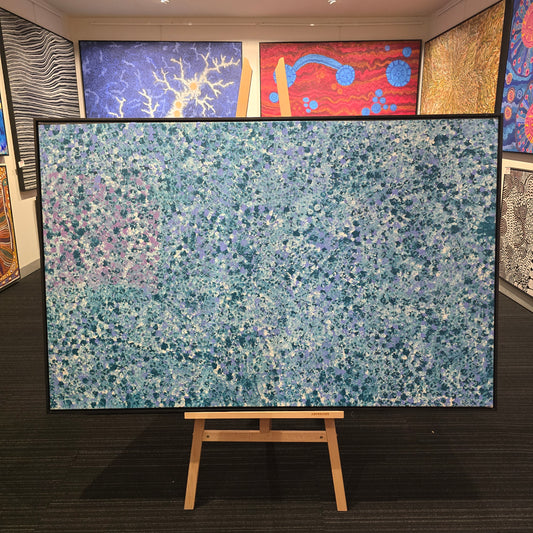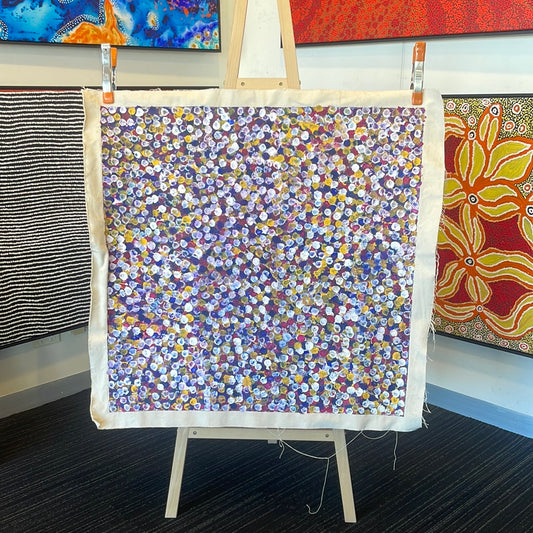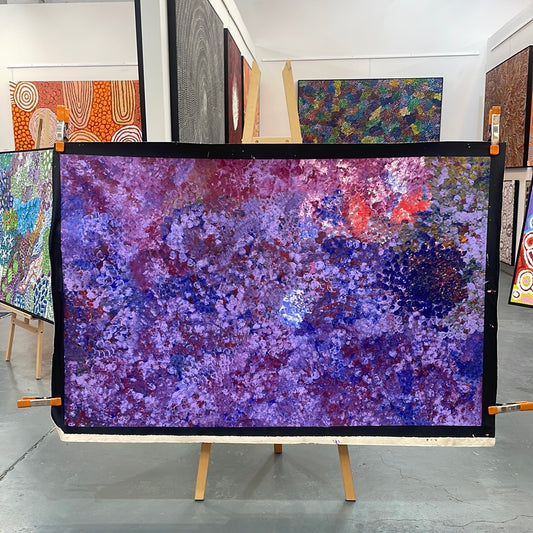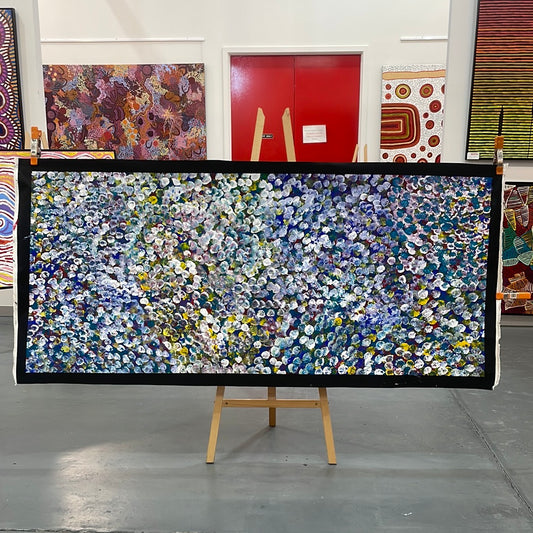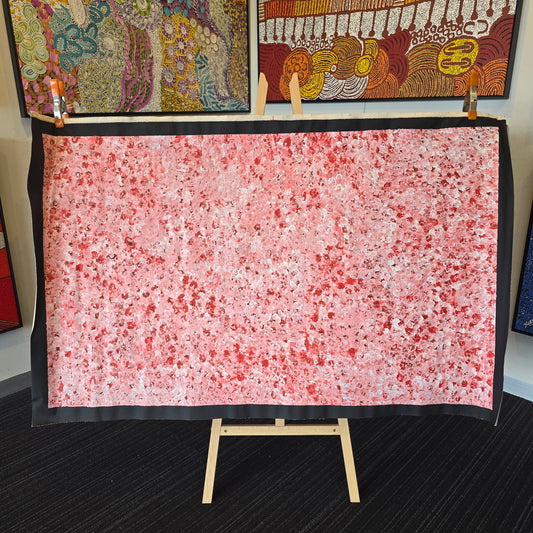Collection: Bessie Pitjara
-
Bessie Pitjara 1000 mm x 1780 mm
CODE : 9954Vendor:Bessie PitjaraRegular price $3,900.00 AUDRegular priceUnit price / per$4,500.00 AUDSale price $3,900.00 AUDSale -
Bessie Pitjara 1100 mm x 2000 mm
CODE : 8028Vendor:Bessie PitjaraRegular price $3,750.00 AUDRegular priceUnit price / per$4,900.00 AUDSale price $3,750.00 AUDSale -
Bessie Pitjara 1300 mm x 2000 mm
CODE : 9950Vendor:Bessie PitjaraRegular price $4,900.00 AUDRegular priceUnit price / per -
Bessie Pitjara 1100 mm x 2000 mm
CODE : 8025Vendor:Bessie PitjaraRegular price $4,700.00 AUDRegular priceUnit price / per -
Bessie Pitjara 1060 mm x 2000 mm
CODE : 8338Vendor:Bessie PitjaraRegular price $4,300.00 AUDRegular priceUnit price / per -
Bessie Pitjara 1360 mm x 2000 mm
CODE : 9951Vendor:Bessie PitjaraRegular price $4,700.00 AUDRegular priceUnit price / per -
Bessie Pitjara 950 mm x 1500 mm
CODE : 8031Vendor:Bessie PitjaraRegular price $2,900.00 AUDRegular priceUnit price / per$0.00 AUDSale price $2,900.00 AUD -
Bessie Pitjara 860 mm x 860 mm
CODE : 7231Vendor:Bessie PitjaraRegular price $990.00 AUDRegular priceUnit price / per$1,500.00 AUDSale price $990.00 AUDSale -
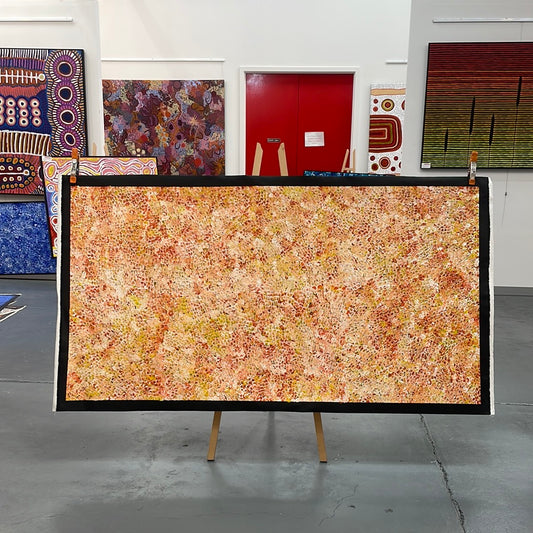 Sold out
Sold outBessie Pitjara 1060 mm x 2000 mm
CODE : 8337Vendor:Bessie PitjaraRegular price $4,300.00 AUDRegular priceUnit price / per -
Bessie Pitjara 940 mm x 1500 mm
CODE : 6518Vendor:Bessie PitjaraRegular price $2,900.00 AUDRegular priceUnit price / per -
Bessie Pitjara 900 mm x 2000 mm
CODE : 6805Vendor:Bessie PitjaraRegular price $3,900.00 AUDRegular priceUnit price / per -
Bessie Pitjara 900 mm x 2000 mm
CODE : 7237Vendor:Bessie PitjaraRegular price $3,900.00 AUDRegular priceUnit price / per -
Bessie Pitjara 950 mm x 1600 mm
CODE : 9024Vendor:Bessie PitjaraRegular price $3,500.00 AUDRegular priceUnit price / per -
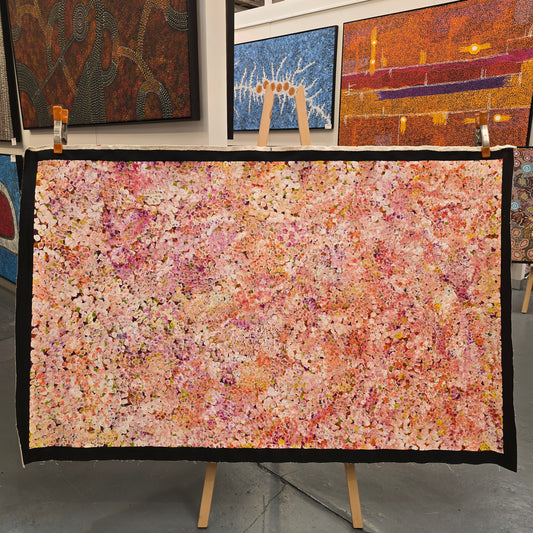 Sold out
Sold outBessie Pitjara 950 mm x 1600 mm
CODE : 9131Vendor:Bessie PitjaraRegular price $3,500.00 AUDRegular priceUnit price / per -
Bessie Pitjara 1000 mm x 1500 mm
CODE : 8029Vendor:Bessie PitjaraRegular price $3,500.00 AUDRegular priceUnit price / per -
Bessie Pitjara 980 mm x 1470 mm
CODE : 9443Vendor:Bessie PitjaraRegular price $1,490.00 AUDRegular priceUnit price / per$2,900.00 AUDSale price $1,490.00 AUDSale
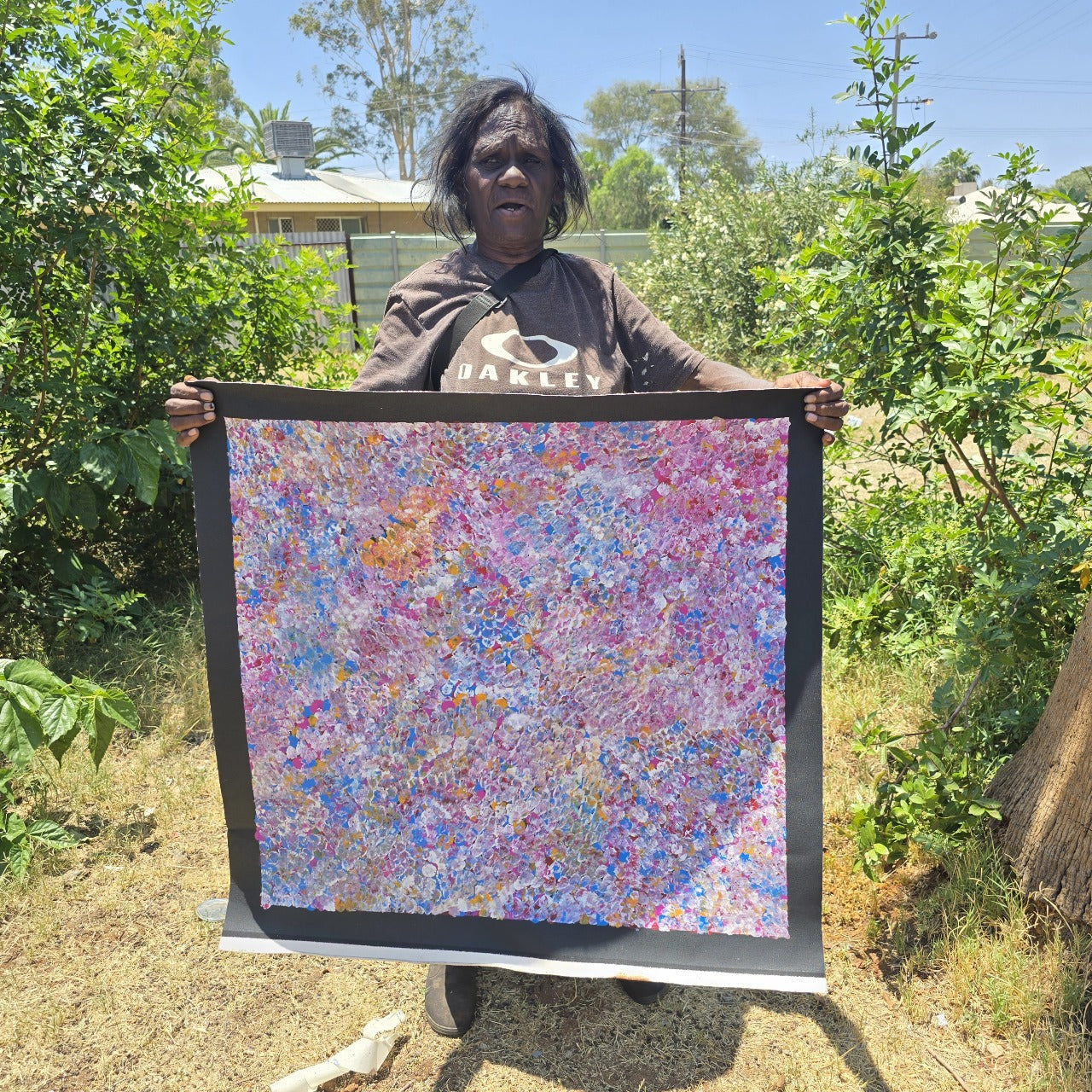
Who is Bessie Pitjara?
Bessie Pitjara is an acclaimed Aboriginal artist of Australia, famous for her paintings depicting Australian territories’ territorial aura and ethnical history. She is the daughter of the highly regarded artist Polly Ngale. Pitjara is an Indigenous artist from the Utopia region of the Northern Territory, Australia, and her work is heavily influenced by traditional Aboriginal themes. Her paintings are now recognised in both Australia and worldwide for their unique style and authentic representation of the Indigenous perception of the world and nature.
Early Life and Background
Bessie Pitjara was born in Utopia, which is located in Northern Territory, Australia. During the first years of life growing up in Utopia, she was surrounded by traditions that were developed due to the norms of the Alyawarre people. In the course of her young life, Pitjara was immediately immersed in a culture that highly prioritised the link between the territory, people, and creation narratives, which later served as the cornerstone of her art.
From her childhood, she learned about the notion of Aboriginal art as the combination of storytelling and graphics. This early exposure inspired her work and her perception of the ‘Dreaming’, the Indigenous worldview of the genesis of life, culture and the physical world. Such experiences allowed her to produce her subsequent creations in which she depicts the spirit of her culture that would be understandable to people all over the world.
Bessie Pitjara's recent works draw deeply from the legacy of three influential figures: her late father-in-law Kudditji Kngwarreye, her aunty Emily Kame Kngwarreye, and her mother Polly Ngale. Through her paintings, she brings to life the spirit of her Country, Alhalkere, and all that it holds.
She also draws inspiration from the art pioneered by respected Utopia artists such as Annie Hunter Pitjara, Delvine Pitjara, Jessie Hunter Pitjara, Kate Pitjara, and Mary Rumble Pitjara.
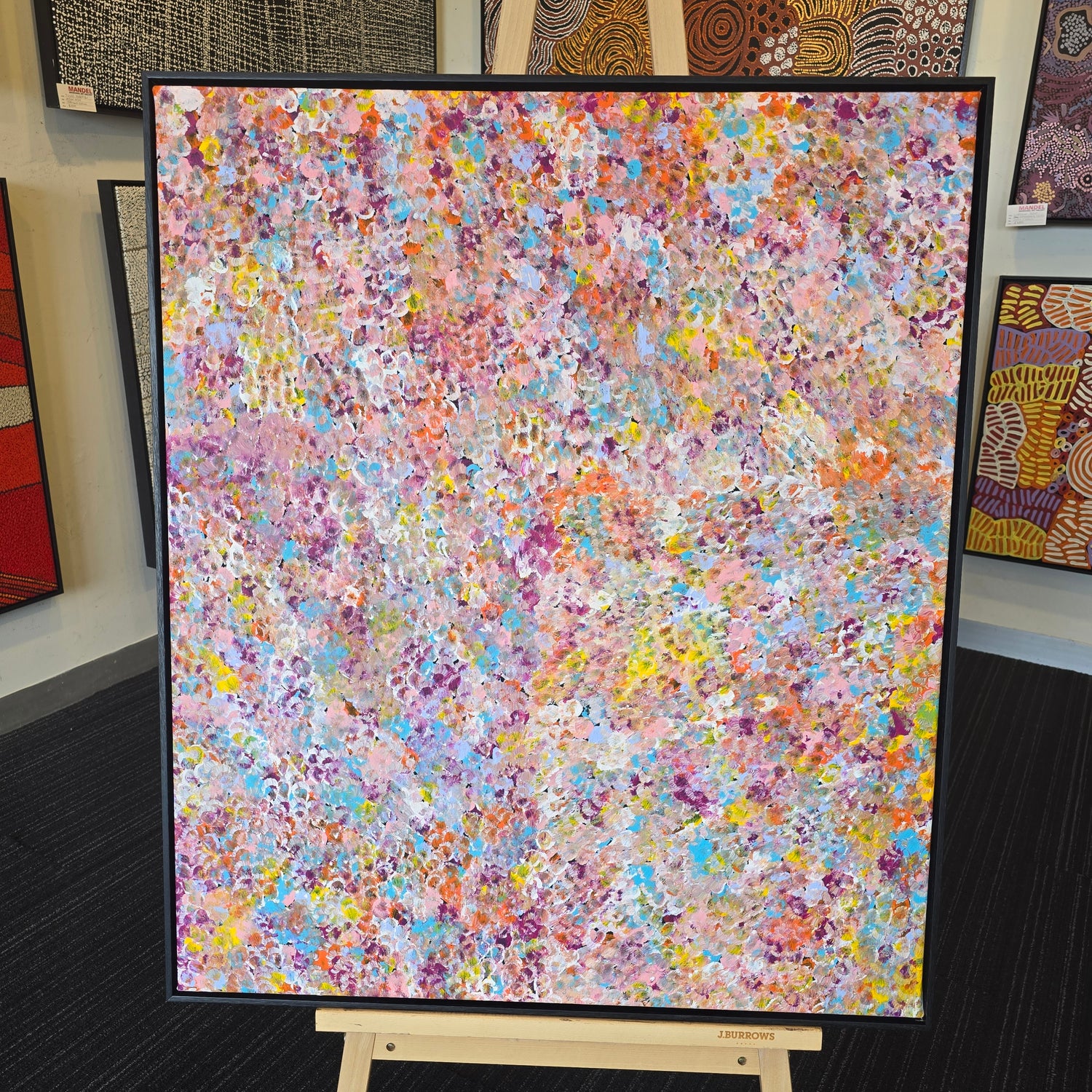
Introduction to Art
By experiencing, learning, and living Indigenous stories and Dreaming narratives, Pitjara embarked on the exploration of art. An important aspect of Indigenous people is the Dreaming which is the account of how the world began and how the spiritual powers which govern the forces of nature exist. This philosophy was always and still is very close to Pitjara and her artwork; she was encouraged to portray these stories in a symbolic way with shapes, colours and patterns in her paintings.
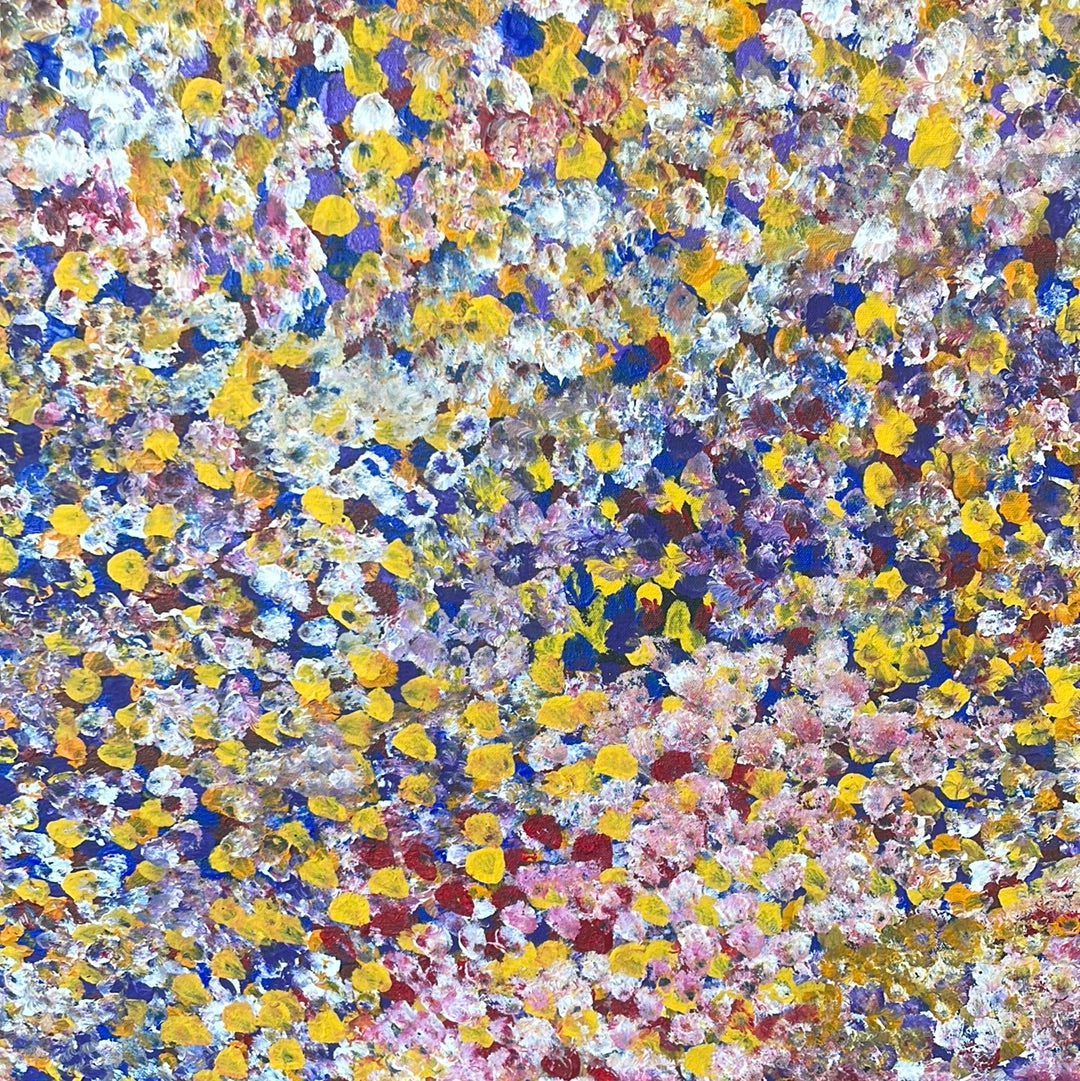
Over time and through discussions with elders from her community and influenced by her family member's artworks, Pitjara was able to practise her artwork with some style that incorporated Indigenous art elements but also included her personal taste. The plants and animals of her homeland and the sacred attributes of the representatives of the plant and animal world also became the focus of her creations. Her art is a sincere expression of appreciation for nature and the Aboriginal spirit as the Sublime for many.
Transition to Professional Artist
Over time Pitjara was able to get more exposure through increased skills and viewpoint, she was able to exhibit her creations in local art fairs. These exhibitions put her art to other people and formed the debut of her as a professional artist. Her works were soon appreciated for her designs and this complex series of dream-like connotations interested both art lovers and collectors.
Pitjara's ascent to the rank of a professional artist enables her to foster the appreciation of indigenous art. Her early exhibitions laid the groundwork for an extensive career, enabling her to reach audiences beyond Australia and share her cultural stories through her art.
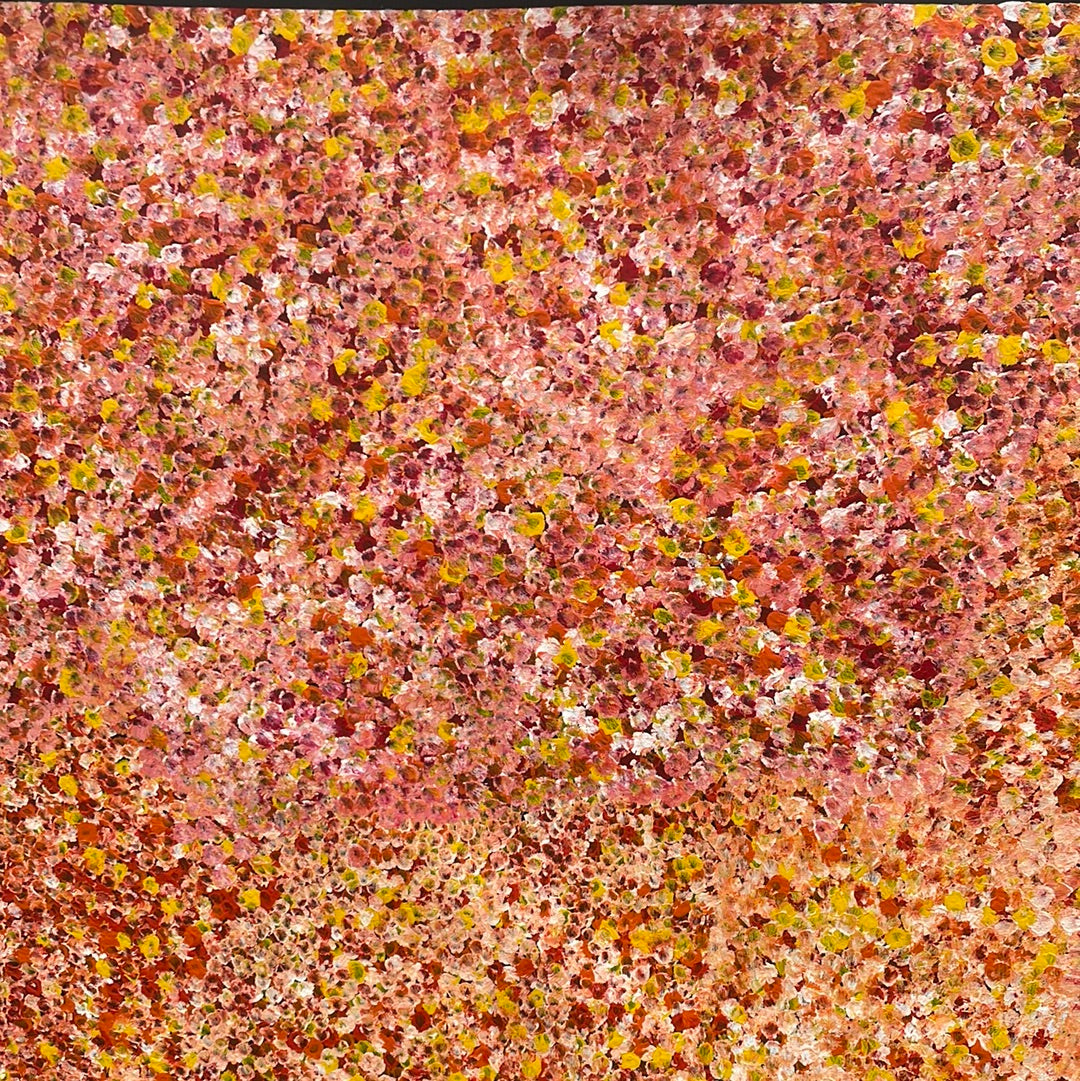
Artistic Style and Techniques
The revered attribute of Bessie Pitjara’s artwork lies in colour complexities, dot painting combined with the creation of impressive patterns derived from natural landscapes. She is famous for her skilful gradations of colour and the use of various repetitions: silvery circles, and fine lines, passing through each other, creating a sense of movement and rhythm. This dot-painting technique which is typical for Aboriginal art has an underlying purpose beyond its aesthetic function but also has a message to share with the audience.
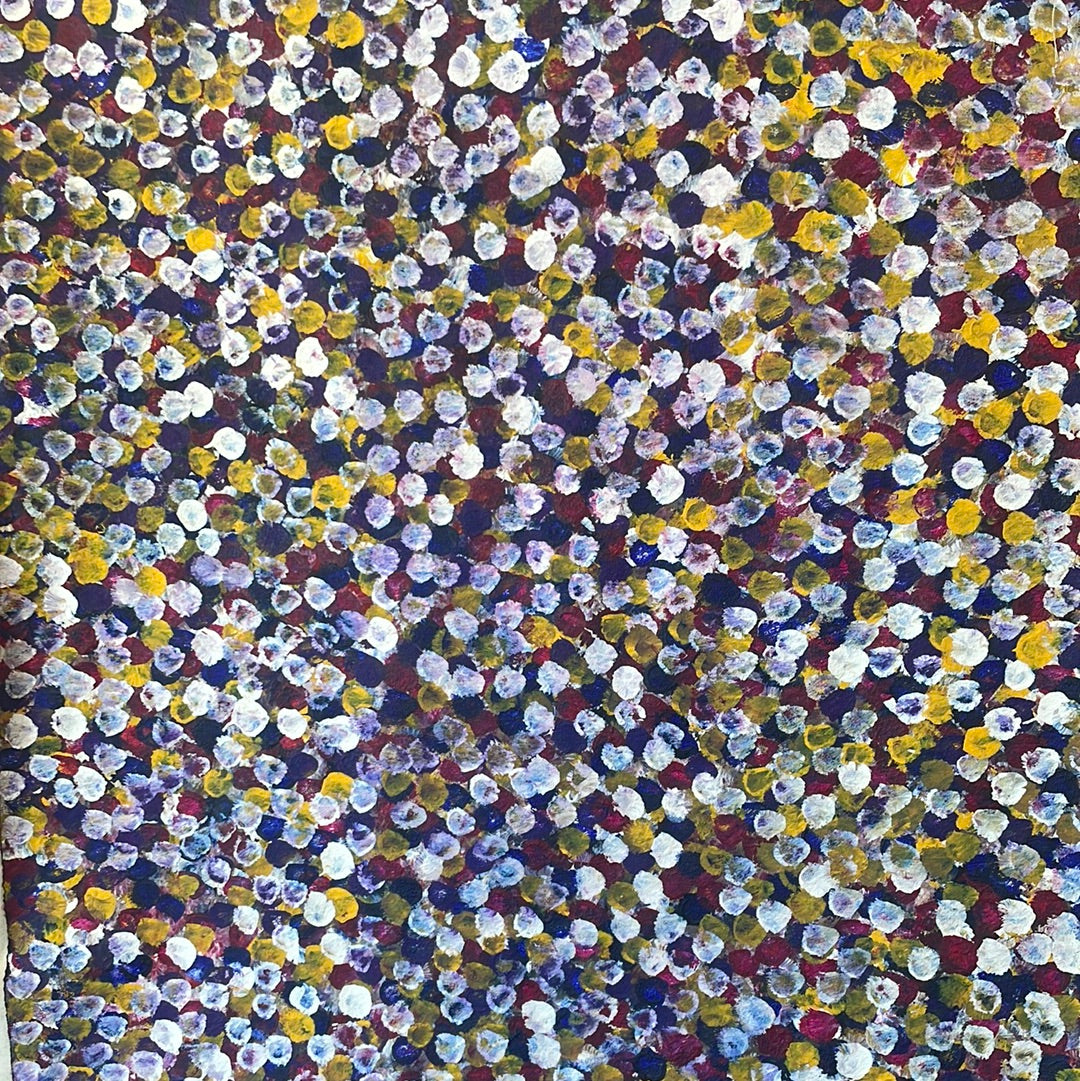
Common colours in her works include the earth tones of reds, browns, greens and whites which relate to the Northern Australian geography. These are representative colours of floral emblem, wildlife, and historical Aboriginal sites. She brings out intricate cultural themes and narratives into identifiable symbols and relays a message about her existence and that of Indigenous people.
Key Themes
In her paintings, Pitjara has elaborated on the complex interactions between people, animals, plants and country. Among those themes, Bush Medicine is represented most often and refers to the Indigenous knowledge of plants. So, when representing such plants Pitjara does not depict the aesthetic beauty of seeds but the indigenous knowledge that has been orally transmitted for centuries for healing and sustainability.
Another recurring concept in her work is the notion of ‘country’ which, for Indigenous Australians, defines not only the physical but also the spiritual presence over the territory. This connection to the country finds its way through her accurate depiction of landscapes in her art, which are not only geographical realities but elemental relationships as well. They are art stories, which are culturally meaningful and therapeutic, and they’re history and knowledge keepers who teach modern audiences about Indigenous wisdom in relationship with nature.
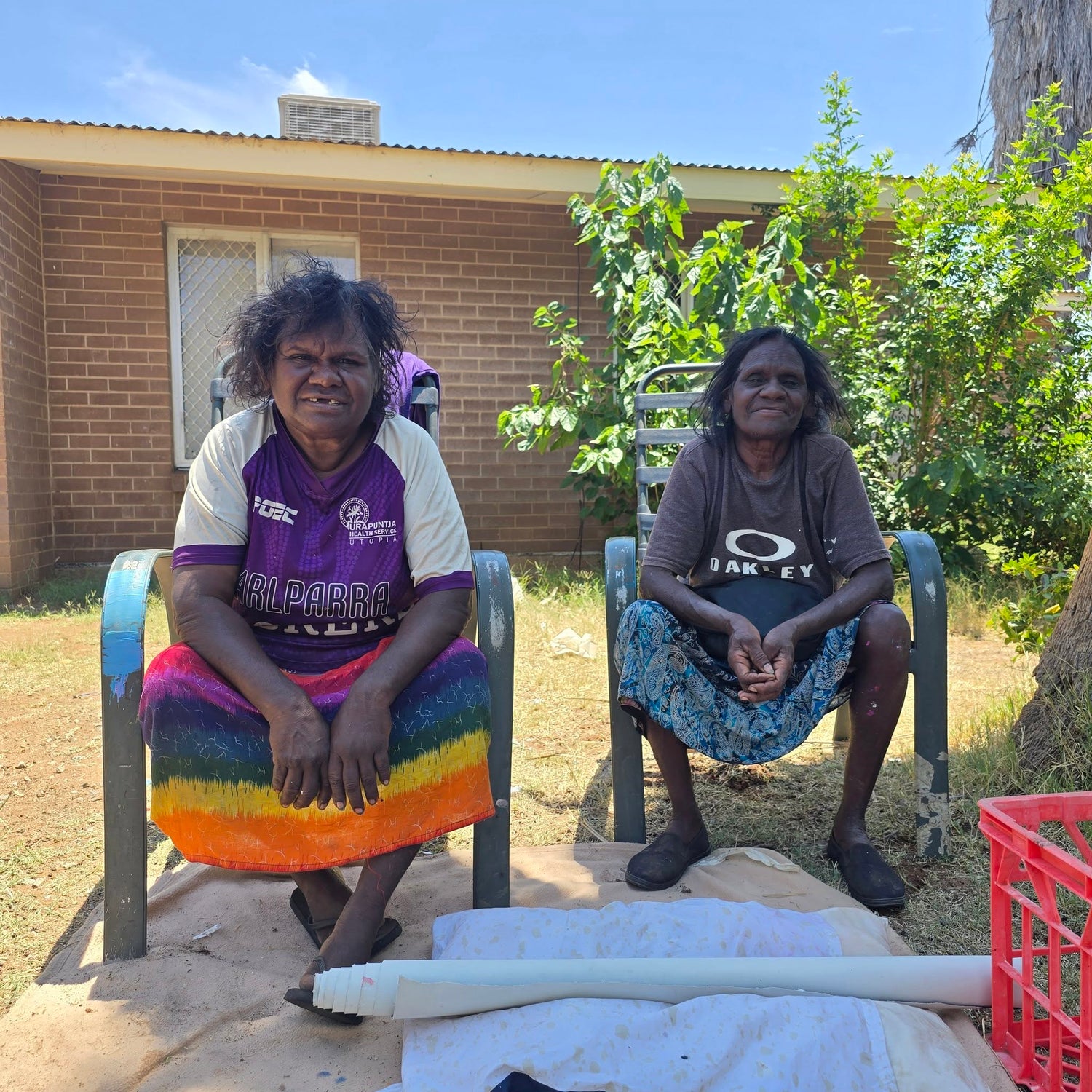
Legacy and Cultural Impact
Bessie Pitjara left the world of art and Indigenous people with a rich, meaningful and outstanding heritage. Through her art, she has been able to paint hope and strength of her heritage or to speak the stories, wisdom and history of her forebears. Her art is cultural in that she seeks to ensure that the knowledge of the people and their spirituality is passed on to succeeding generations.
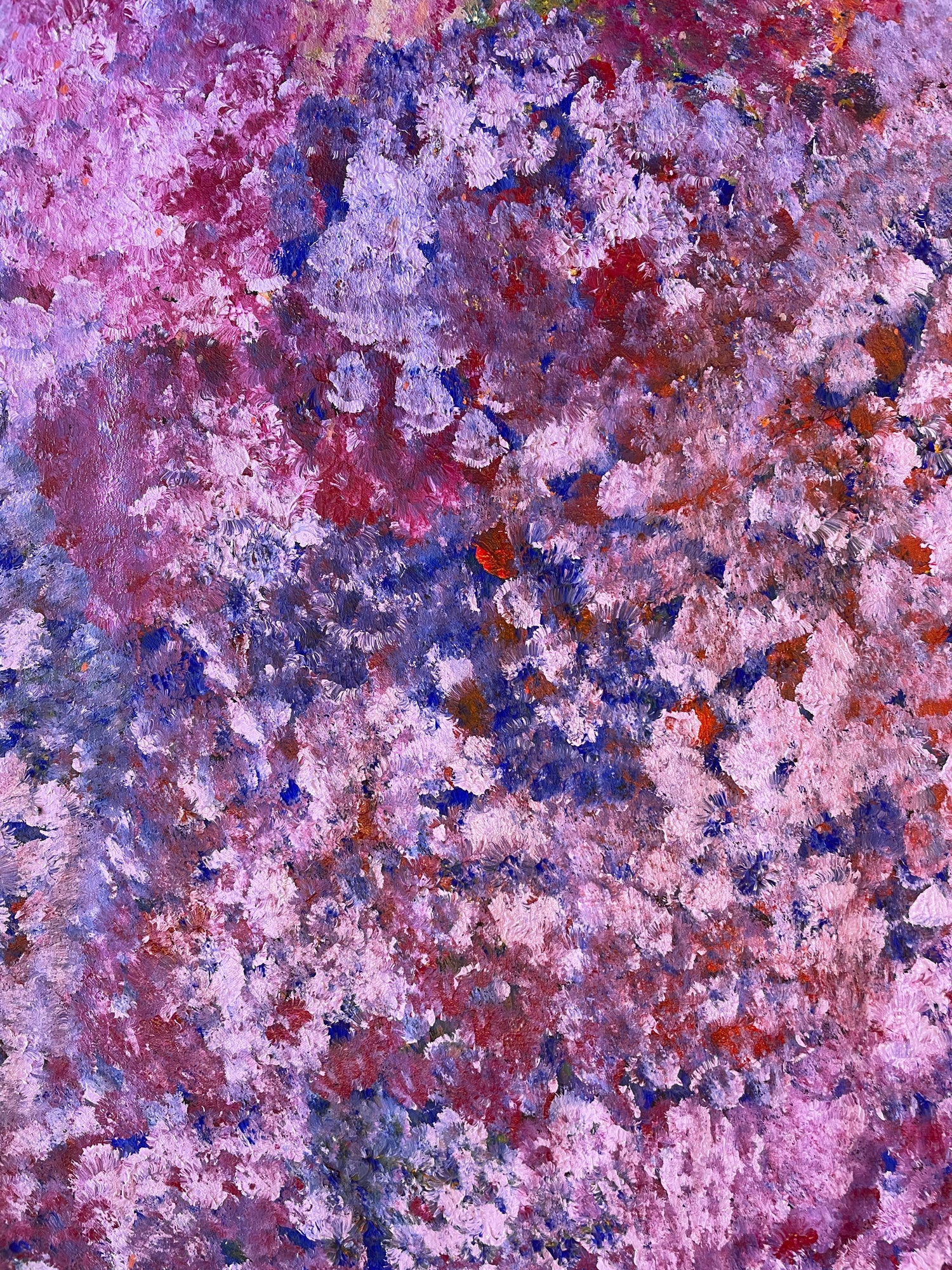
Apart from her individual success story, it is also worth knowing about the contribution she made to the Indigenous art world where this woman is a trailblazer. Her work has guided hundreds of young artists to delve into their roots and put Indigenous culture into their contemporary art, producing artists who pay tribute to the tribes’ traditions while being innovative. Today, Pitjara has painted as an inspiration of the Indigenous and their strength and resourcefulness and her artwork portrays the spirit of her people.
Continuing Influence on the Next Generation
The impact that Bessie Pitjara had on the future generation of artists, and especially indigenous artists, cannot be understated. From her success story, young members of her community want to be artists and use art as a medium of depicting their true colours and culture. This makes Pitjara a role model for many young artists starting out because she represents what Indigenous artists and their experiences have the ability to be showcased to the world.
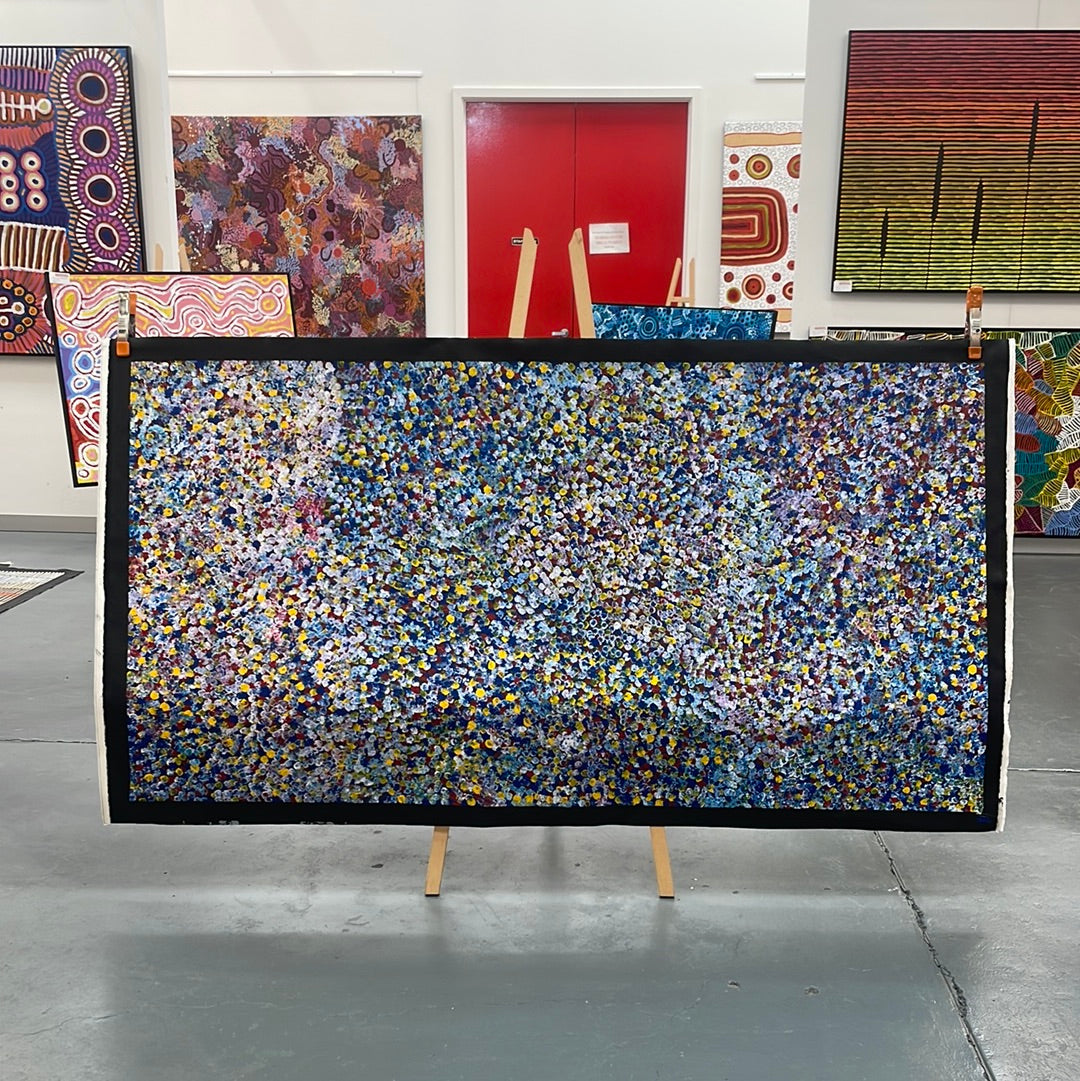
Bessie Pitjara will always be remembered as an Australian artist who made significant contributions to art not only in her country but also in other parts of the world. Much of her work informed by the heritage of her people directly resonates with the theme of Indigenous peoples’ endurance and beauty.
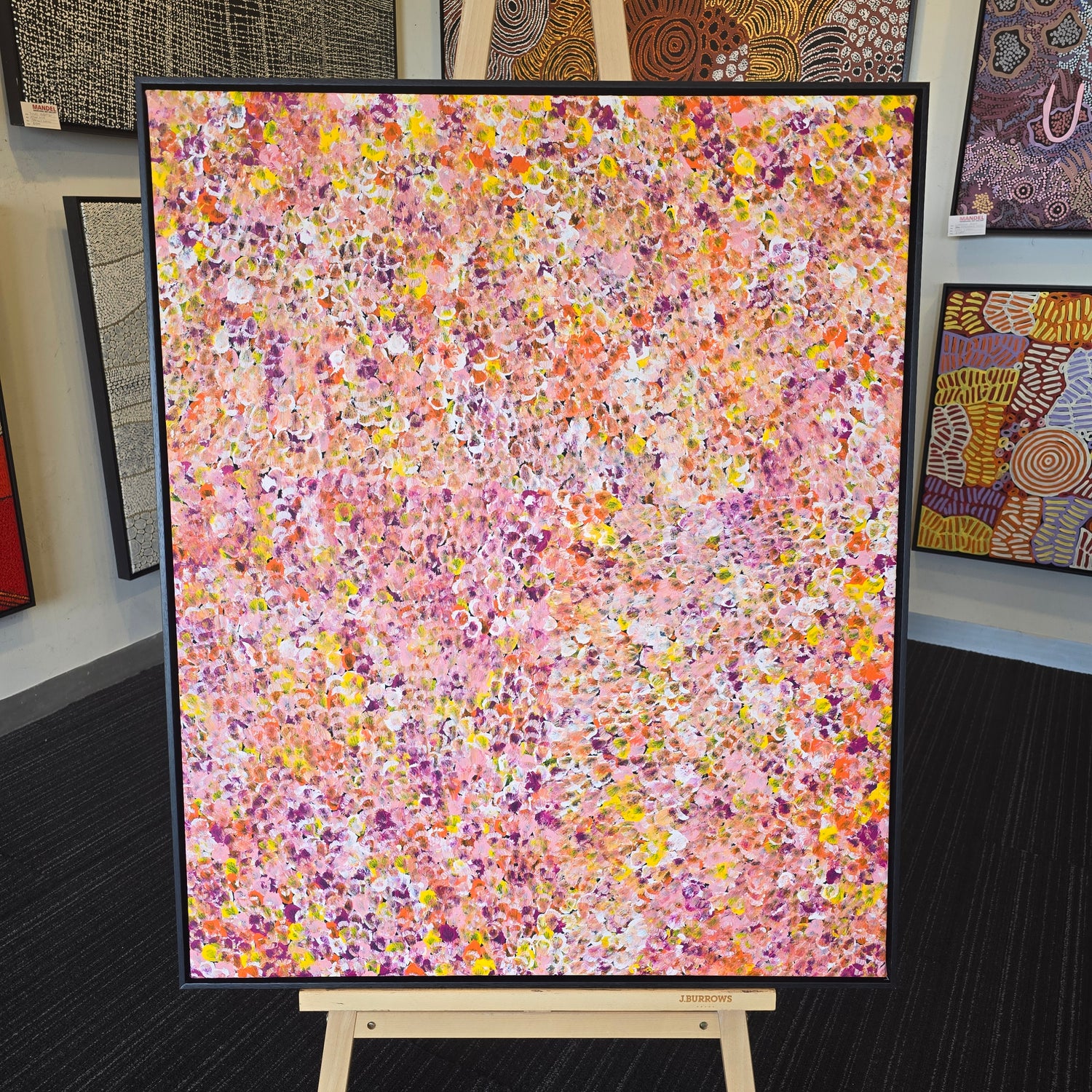
Pitjara, thus, has depicted her culture in her artwork and provides a viewer with a peek into the spiritual and wisdom of Indigenous populations. This account enshrines her legacy and, represents a model for Indigenous Australians exploring the possibilities of artistic achievements in Indigenous Australian art.
Follow Bessie Pitjara into the Traditional Aboriginal World of Art!
Learn more about Indigenous Australian art and the culture of Indigenous people through Bessie Pitjara’s paintings. Her artwork is the representation of the positive sides of her nation as well as the view from the perspective of a native at the vision of nature and spirituality.
Ready to explore Indigenous art and the story of Bessie Pitjara? Visit Mandel Aboriginal Art Gallery or call us at 03 9497 5111 to dive deeper into her stories.
Frequently Asked Questions
Who is Bessie Pitjara?
Bessie Pitjara is a contemporary Aboriginal artist from the Utopia region in the Northern Territory of Australia. The daughter of respected artist Polly Ngale, Bessie is known for her vibrant dot paintings that capture the Bush Plum Dreaming (Anwekety) — a sacred story handed down through her family for generations.
What is the meaning behind Bessie Pitjara’s artworks?
Her paintings represent the Bush Plum Dreaming, which reflects ancestral stories, women’s ceremonial practices, and the seasonal cycles of native bush plums — a vital food and spiritual symbol in her culture.
What painting style does Bessie Pitjara use?
Bessie uses a layered dot-painting technique to create textured, impressionistic works. Her art is often described as having a three-dimensional quality, with detailed color fields that change with light and distance.
Is Bessie Pitjara related to other well-known Aboriginal artists?
Yes. Bessie Pitjara is the daughter of acclaimed artist Polly Ngale and the niece of renowned artists Kathleen and Angeline Ngale, all of whom are respected painters from the Utopia region.
Are Bessie Pitjara’s artworks authentic and original?
Yes, all her artworks featured at Mandel Aboriginal Art Gallery are original and ethically sourced. Each piece is created by the artist and often includes a certificate of authenticity.
Do her paintings include Dreamtime stories?
Yes. Many of Bessie Pitjara’s works are inspired by Dreamtime stories, especially those related to women’s roles in gathering bush food and performing ceremonial rites in Alyawarre culture.
Can I buy Bessie Pitjara’s artworks online?
Yes, Bessie Pitjara’s paintings are available for purchase online through Mandel Art Gallery and include safe packaging, shipping options, and authentication documents.





